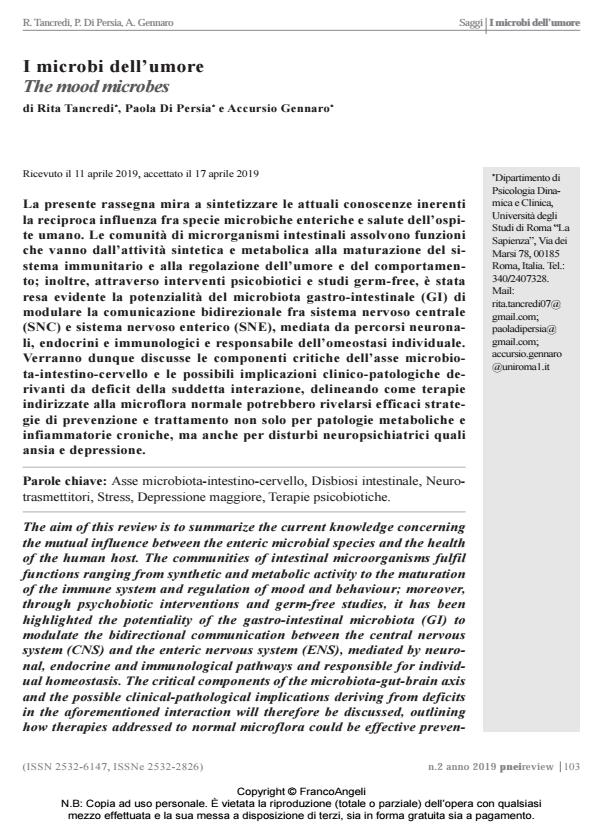The mood microbes
Journal title PNEI REVIEW
Author/s Rita Tancredi, Paola Di Persia, Accursio Gennaro
Publishing Year 2019 Issue 2019/2
Language Italian Pages 10 P. 103-112 File size 112 KB
DOI 10.3280/PNEI2019-002010
DOI is like a bar code for intellectual property: to have more infomation
click here
Below, you can see the article first page
If you want to buy this article in PDF format, you can do it, following the instructions to buy download credits

FrancoAngeli is member of Publishers International Linking Association, Inc (PILA), a not-for-profit association which run the CrossRef service enabling links to and from online scholarly content.
The aim of this review is to summarize the current knowledge concerning the mutual influence between the enteric microbial species and the health of the human host. The communities of intestinal microorganisms fulfil functions ranging from synthetic and metabolic activity to the maturation of the immune system and regulation of mood and behaviour; moreover, through psychobiotic interventions and germ-free studies, it has been highlighted the potentiality of the gastro-intestinal microbiota (GI) to modulate the bidirectional communication between the central nervous system (CNS) and the enteric nervous system (ENS), mediated by neuronal, endocrine and immunological pathways and responsible for individual homeostasis. The critical components of the microbiota-gut-brain axis and the possible clinical-pathological implications deriving from deficits in the aforementioned interaction will therefore be discussed, outlining how therapies addressed to normal microflora could be effective preven tion and treatment strategies not only for metabolic and chronic inflammatory diseases, but also for neuropsychiatric disorders such as anxiety and depression.
Keywords: Microbiota-gut-brain axis, Gut dysbiosis, Neurotransmitters, Stress, Major depressive disorder, Psychobiotic therapies
Rita Tancredi, Paola Di Persia, Accursio Gennaro, I microbi dell’umore in "PNEI REVIEW" 2/2019, pp 103-112, DOI: 10.3280/PNEI2019-002010